As the eyes of the aviation world turn their attention towards the Paris Air Show, reporter John Walton previews the week ahead at Le Bourget.
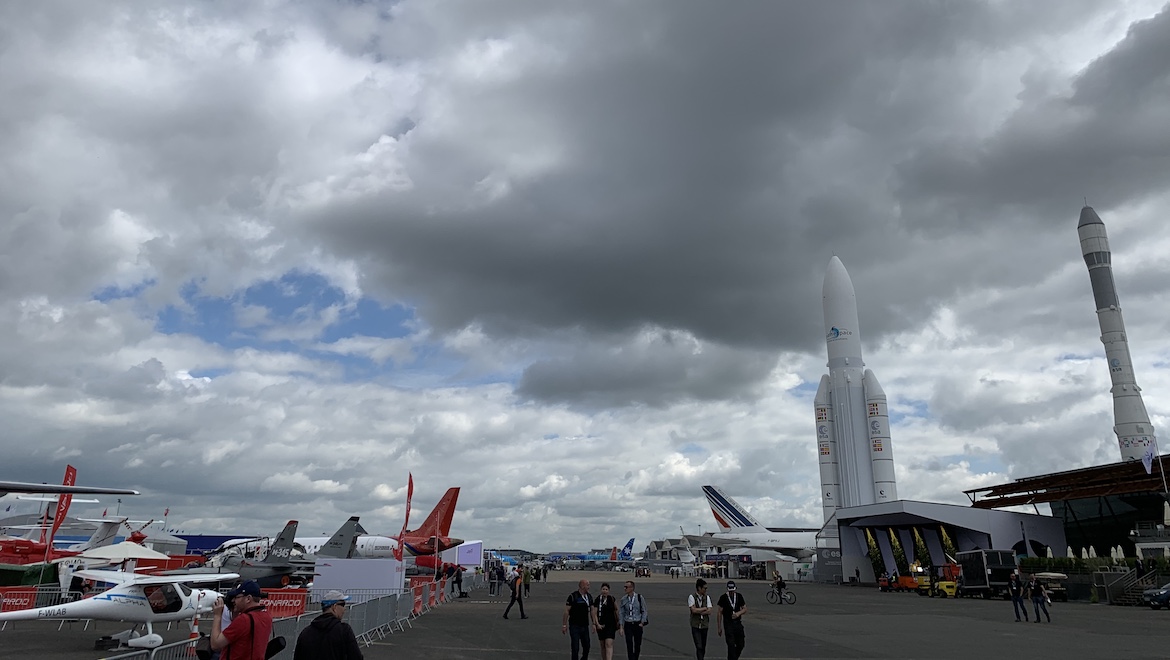
Despite some shockingly pleasant weather, the chalet and display preparations for this year’s Paris Air Show were muted on Sunday as several dark clouds hang over the industry, from the ongoing 737 MAX crisis, rising Sino-American trade tensions and the simmering Gulf conflict.
More than in previous years, the question of whether the world’s largest air show will be “quiet” or “busy” remains unanswered as airframers, suppliers, and the rest of the industry keep their cards unusually close to their chests before the 53rd “Salon international de l’aéronautique et de l’espace de Paris-Le Bourget” kicks off on Monday (European time).
Boeing’s static display is expectedly muted and its program looking quiet
After rip-roaring pre-air show plans in previous years, Boeing’s ongoing problems with the 737 MAX loom large over the US airframer’s show in 2019.
All that’s on offer on the passenger side is an Air Tahiti Boeing 787-9 Dreamliner, with a converted Boeing 737-800 cargo freighter adding to the commercial tally.
On the military side, Boeing said: “The US Department of Defense also will display several Boeing platforms, including the AH-64 Apache attack helicopter, the CH-47 Chinook heavy-lift helicopter, the F-15 fighter, the P-8 maritime patrol aircraft and the international air show debut of the KC-46 tanker.”
Therefore, the only 737s at Le Bourget will be an Amazon Prime Air-branded converted -800 freighter and the Poseidon.
Boeing also played down the likelihood of a high-order show, at a time when it could very much use some good news from its 787 and 777 widebody programs in particular to counteract the bad news from the 737 MAX and the resulting stasis in which its new mid-market airplane (NMA) replacement for the 757 and 767 finds itself.
Good news for Boeing from China in particular is unlikely to be imminent given the current rising trade tensions between that country and the United States. As the US’ largest exporter, a major defence contractor and a company seen to be very close to the current White House, Boeing’s position in the matter looks to offer significant downside and very little upside.
Somewhat astoundingly in the MAX context, Boeing also seems to be proposing to reduce both the scope and duration of physical testing for new aircraft, according to a Reuters report. To say that this idea is presently going down like a cup of cold sick around Le Bourget would be understating matters.
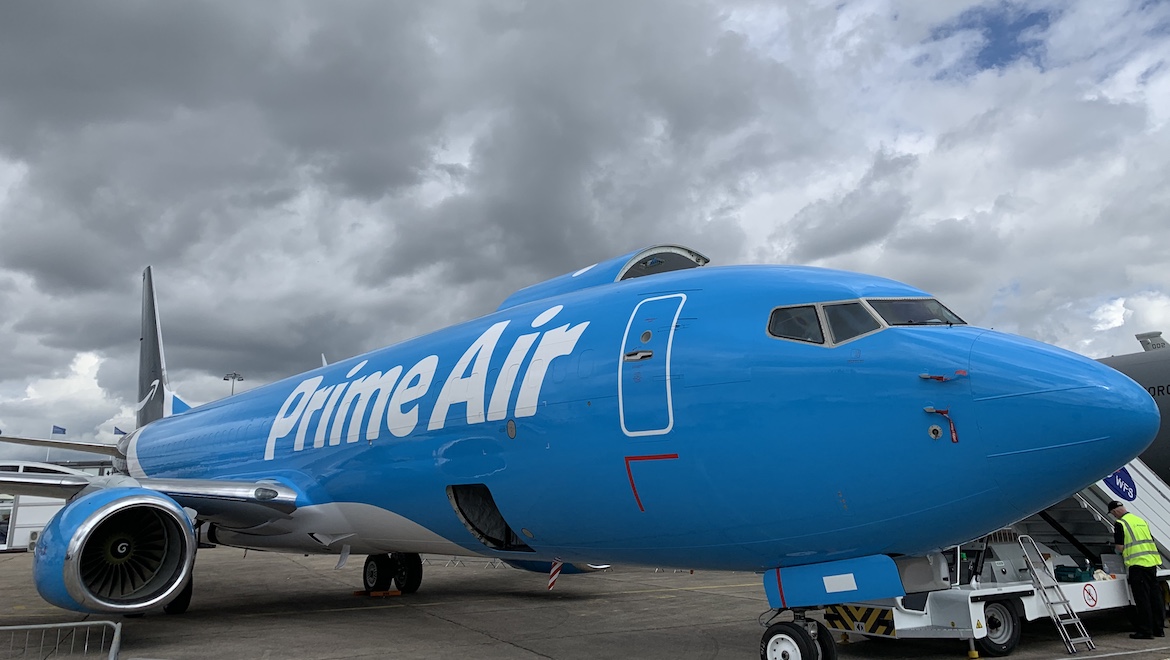
Emirates rumoured to be swapping some 777X for 787-10
Boeing may well not be pleased by the idea that Emirates is looking to convert some of its orders for its new flagship 777-9 to smaller 787-10s, according to well-connected reporter Dominic Gates of the Seattle Times.
Emirates placed one of the orders classified as “world’s biggest” for the 777X, which makes up just under half of the total orders for the re-engined, re-winged stretch of the 777.
Qatar Airways chief executive Akbar al Baker was rumoured to also be looking to renegotiate his 777X orders, and indeed it would be a sensible commercial move for any airline chief executive to look to pressure Boeing during this trying time for the airframer — and indeed for the 777X program.
Given Emirates’ swap to the A350 and A330neo as part of the sunsetting of the A380, what the Dubai megacarrier does with the 777X will be a crucial bellwether for the future of the program, which is already encountering problems with the General Electric GE9X engines that dashed mooted plans to bring the aircraft to Le Bourget.
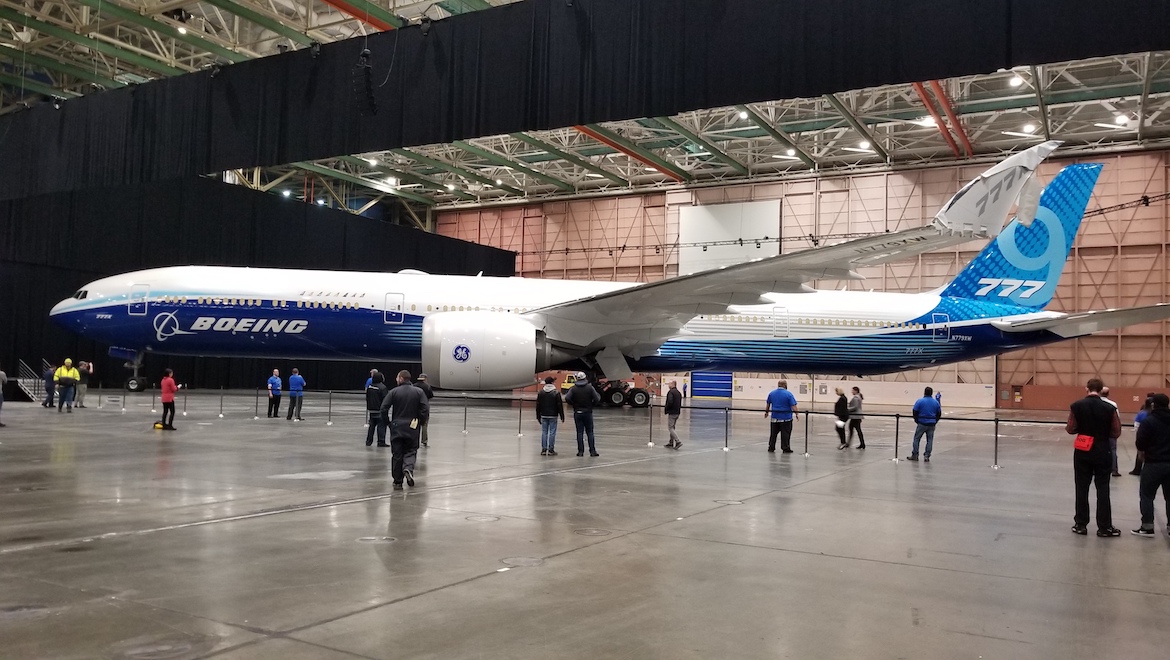
Airbus, missing the A380, shows Qatar Airways again
With the sunsetting of Airbus’ A380 superjumbo, the European airframer is showing off its stretched A350-1000 aircraft at the high-capacity end of its range, with a Qatar Airways example arriving at the show on Sunday.
In the runup to Le Bourget, there was some confusion and little shown work around claims from Airbus chief commercial officer Christian Scherer at a pre-briefing that a fully loaded A350 is 45 tonnes lighter than a 777X for 400-passenger missions on long- to ultra-long haul routes. Expect discussion of this — and the new proposition for ultra-ultra-narrow 10-abreast seating down the back of the aircraft that will enable this — to dominate on the airline economics and passenger experience fronts at the show.
Qatar Airways has for some years now been the go-to airline for display aircraft at Paris (and the even-years’ air show at Farnborough across the English Channel). It is hard to imagine much news to discuss about a product that is now several years old, and indeed perhaps Airbus would be better served by sourcing an airframe to tour that was new to attendees and showcased the diversity of products onboard.
Spotted! Our @Airbus A350-1000 has landed @salondubourget. Get ready for tomorrow! #PAS2019 #FirstIn1000 pic.twitter.com/jUYMnv3pI9
— Qatar Airways (@qatarairways) June 16, 2019
On that note, an A330-900neo from AirAsia X has arrived at Le Bourget and will be on show. if hints dropped by senior Airbus executives this week are anything to go by, there will be some more orders for the A330neo, the re-engined version of the venerable European widebody.
Airbus seems sensitive about the idea that the A330neo is a slow seller, and while the aircraft initially failed to secure the orders the airframer might have liked, over the last year it has gained substantial momentum.
Airbus’ A321LR, the long-range version of the re-engined neo family, will also be a hot topic on the show, with the all-business-class version from French boutique airline La Compagnie, which shuttles between France and the US, on show at Le Bourget.
Expect also the launch of the A321XLR, the much-mooted, much-rumoured even longer-range version of the A321LR.
If the industry scuttlebutt is to be believed, this aircraft will replace and/or supplement the cargo hold tanks with additional fuel capacity that doesn’t affect space that would be otherwise used for payload, extending the range of the A321LR beyond its current 4,000nm.
The A220, né Bombardier CSeries, has seen much marketing activity from Airbus in the past year, and indeed is tipped to see more orders at this year’s show.
Arrival of @Airbus #A330neo ? #Thai @AirAsia ✈️#PAS19 #ParisAirShow #SIAE2019 #RynekLotniczy #avgeek #aviation #media #Poland #France #LeBourget #presse #press pic.twitter.com/DFkBhoqNh1
— Piotr Bożyk (@PiotrBozyk) June 16, 2019
Lockheed Martin’s Hercules comes in strong, but Lightning strikes again
Fresh from a big win in New Zealand, which chose the C-130J-30 Super Hercules to replace its fleet of C-130H Hercules, Lockheed Martin is heading into Le Bourget with another push for the civilian version of its C-130 Hercules family, the LM-100J.
In addition, Lockheed was showing one of its C-130H Hercules with rocket boosters and snow kit — and, it looks like, the same eight-bladed propellors as found on the Northrop Grumman E-2 Hawkeye — next to a more modern C-130J in appropriately celebratory D-Day colours.
The F-35 program, meanwhile, is coming into Le Bourget alongside the oft-used adjective “embattled”. Production problems are still occurring, and questions around the future of sales to Turkey — and indeed the country’s participation in the F-35 program — are still outstanding following that country’s plans to purchase Russian S-400 air defence systems.
Alternative view of @salondubourget #PAS19 from an alternative office window today. Check out all our news and learn about our exciting partnerships in Europe and beyond via @LockheedMartin during the week ahead. pic.twitter.com/xoQ9VdechA
— John Neilson (@flyingjok) June 16, 2019
European next-gen FCAS under wraps, but still set for unveiling
The F-35’s ongoing woes provide something of an opportunity for the European sixth-generation fighter platform called SCAF in French and FCAS in English.
The Future Combat Air System platform seems set to make its début at Le Bourget, and a mockup taking a very sixth-generation shape was spotted under quite literal wraps at the air show this week.
With hopes that, after Brexit and the unveiling of the BAe Systems Tempest at Farnborough last year, the Dassault-Airbus concept study will become a truly European project, the recent addition of the Spanish government to the mix is good news.
Substantial airframe replacement is required across Europe, and the Franco-German, Dassault-Airbus partnership will be able to draw down European funding with a third national partner involved.
Engines will be designed in partnership between France’s Safran and Germany’s MTU, while the Airbus-BAE-Leonardo-owned MBDA Systems looks set to announce a first round of armament options for the platform.

Mitsubishi’s SpaceJet wows with new livery and new model . . . and new stablemate?
The future of the regional jet aircraft market, only too recently the subject of interest from numerous airframers, has begun to shrink markedly over recent times.
China’s Comac ARJ21 is making little visible progress and has seen little international interest. Sukhoi’s Superjet SSJ100 has an accident investigation cloud over it following the recent crash.
Embraer’s re-engined E2 generation of its E-Jet — nicknamed the Profit Hunter — is in a fetching “digital lion” livery after the previous tiger and eagle paint jobs, but is still on the hunt for substantial orders, and doesn’t expect to field an E2 version of the E170.
The field is thus the Mitsubishi SpaceJet, renamed from the Mitsubishi Regional Jet, and the Bombardier CRJ Series, on which more shortly.
“The Mitsubishi SpaceJet family represents our plan to redefine the business of regional air travel,” explains Mitsubishi Aircraft Corporation president Hisakazu Mizutani
The SpaceJet rebrand is not just an attempt to move the former MRJ out of the firmly regional category in which it was planted, but to resize the aircraft.
The existing MRJ90 becomes the M90, while the mooted MRJ70 turns into the M100, confusingly larger than the MRJ70 but still smaller than the M90. The M100 is aimed firmly at the US market, where the ‘scope clauses’ in contracts between the major American carriers restrict the number, weight and passenger count of regional jets that the airlines are permitted to operate or have operated for them by outsourced ‘express’ or ‘connection’ carriers.
Says Mitsubishi: “In the US market, the aircraft is optimized to be scope clause compliant in the 65-76 seat, three-class cabin configuration. It can also be flexibly configured for other global market needs up to 88 seats single class, with industry leading operating economics throughout the full range of configurations.”
The question for the SpaceJet program is how many orders this will generate, and indeed whether the M90 is properly sized for the international market, where the 100-seat limit for two flight attendants is more relevant.
Perhaps a greater question is when — not if — Mitsubishi will take over the CRJ, formerly Canadair Regional Jet, program from Bombardier. All signs point to this being a done deal following the transition of the CSeries to become the Airbus A220 and the Q400 to the newly resurrected De Havilland Canada. But it is as yet unclear whether the transaction will finalise this week.
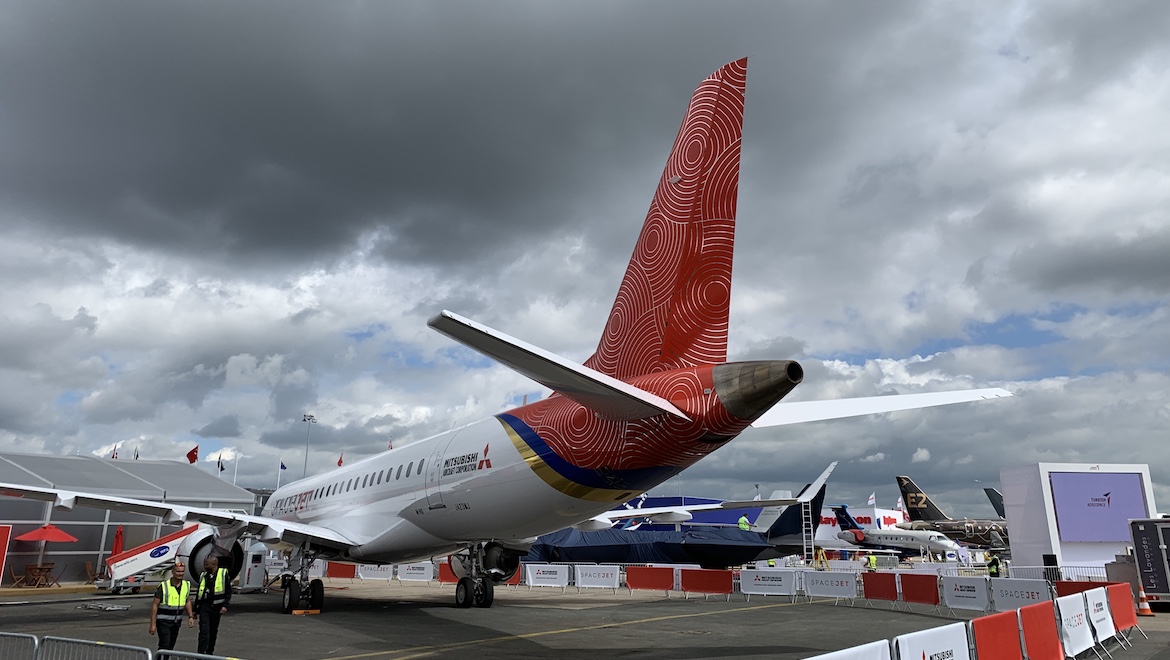
Likely too early for many De Havilland Canada changes to ex-Bombardier Q400
With the very recent finalisation of the sale of the aircraft formerly known as the De Havilland Canada DHC-8, recently the Bombardier Q400 and, as of today, un-re-branded on the static display stands of Le Bourget, there has been little time for the aircraft’s new owner to figure out what its plans are for the veteran turboprop.
A 90-seater ultra-high-density version of the Q400, destined for Indian carrier Spicejet, is on display, perched in a slightly odd position in terms of the aircraft tetris on the Le Bourget tarmac and indeed from a geopolitical standpoint, with a militarised version of the ATR 72 in Pakistan Navy colours pointed straight at the side of Indian-registered Q400.
“Building on the momentum of the recent launch of De Havilland Aircraft of Canada Limited – the trade name of the subsidiary company that will operate the worldwide Dash 8 aircraft business including the 100, 200 and 300 series and the in-production 400 program – during the show Longview will showcase its range of in-demand passenger and utility aircraft, and discuss developments from across its portfolio,” says De Havilland, noting that its parent company Longview and sibling Viking also “expect to make a significant progress announcement regarding the CL-515, a newly developed, technically advanced multi-mission aerial firefighting aircraft.”
Electric aircraft, air taxis and urban mobility clustering around the show
A figurative and potentially literal flock of small electrically powered aircraft has descended on Le Bourget, largely in mockup form but with some relatively advanced concepts.
The ideas ranges from city and city-region mobility options like Airbus’ Vahana, through to multi-person aircraft like the German Lilium Jet, up to the Eviation Alice commuter aircraft, with numerous concepts in between.
The key problem with all of these is battery life, and despite substantial advances there is much work remaining to be done to increase range and safety margin, as well as to determine how to regulate and manage this type of air traffic.
But it certainly seems like the future is coming. The California-based Design and Innovation Studio thinktank from French supersupplier Safran has even been working with Uber to think about what the minivan equivalent of these aircraft could look like.
“Combining the mass market experience on larger passenger aircraft with the specialized expertise it also possesses from designing and building interiors for small business jets, Safran Cabin designed a complete, integrated cabin interior based on a common eVTOL specification,” explains the company.
“Designed to be adaptable to the varying envelopes of different OEM vehicle designs, the interior nonetheless will feel familiar to passengers as Uber seeks to make urban air travel simple, safe, and accessible to all. Designed around the mission of turning a typical 90-minute car ride into a 15-minute flight, the future vehicle will allow passengers to quickly travel point-to-point in crowded urban environments by going vertical.”
Scott Savian, the executive vice president in charge of the thinktank, explains the process: “Through the process with Uber, we had six full-scale mockups, with multiple iterations in each one, looking at the seats, liners, and window positioning. We don’t want any excess weight or cost, but the mission also requires safety, a comfortable user experience, and a seamlessness of all the user interactions. So while the cabin may be minimal in some ways, it’s absolutely purpose built to the mission.”
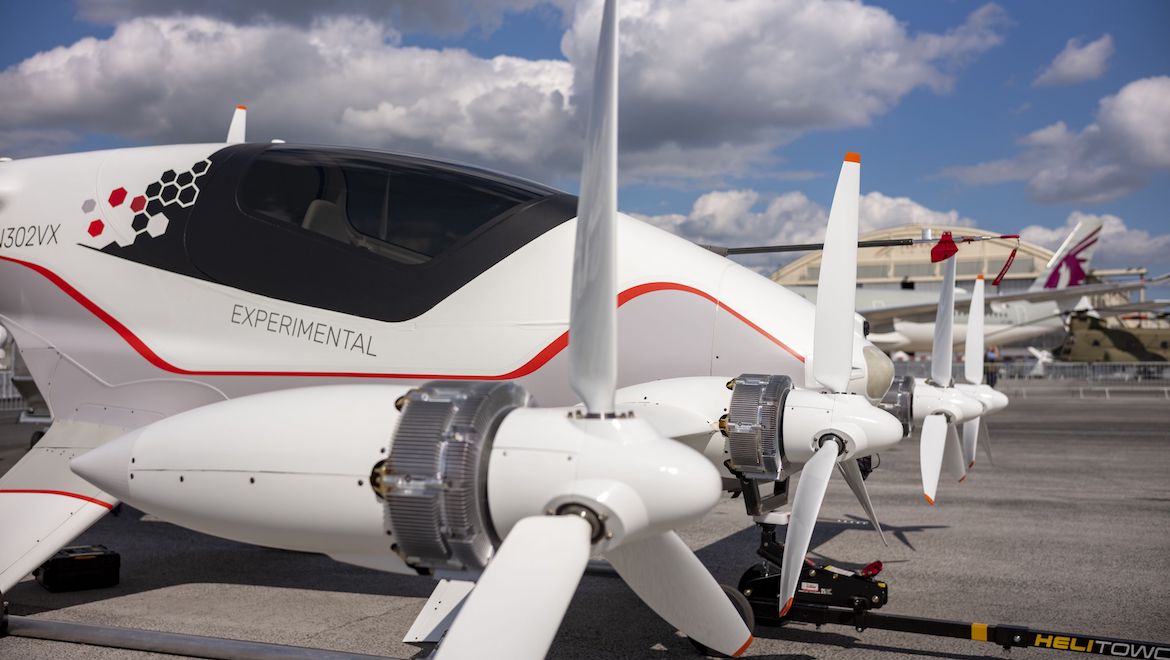
And lastly . . .
This is gonna be a hard show for people with Australian accents. #PAS19 pic.twitter.com/IW7sNTc2fp
— John Walton ?️??? (@thatjohn) June 16, 2019
John Walton is at Le Bourget all week — follow him live on Twitter at @thatjohn.











